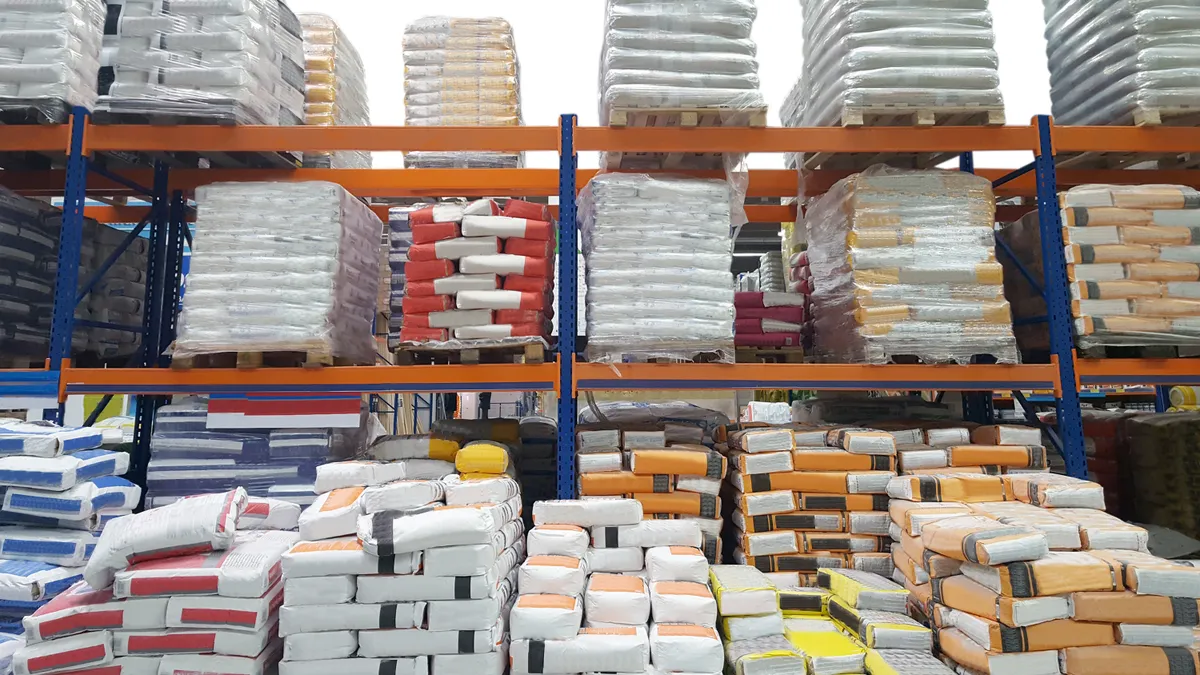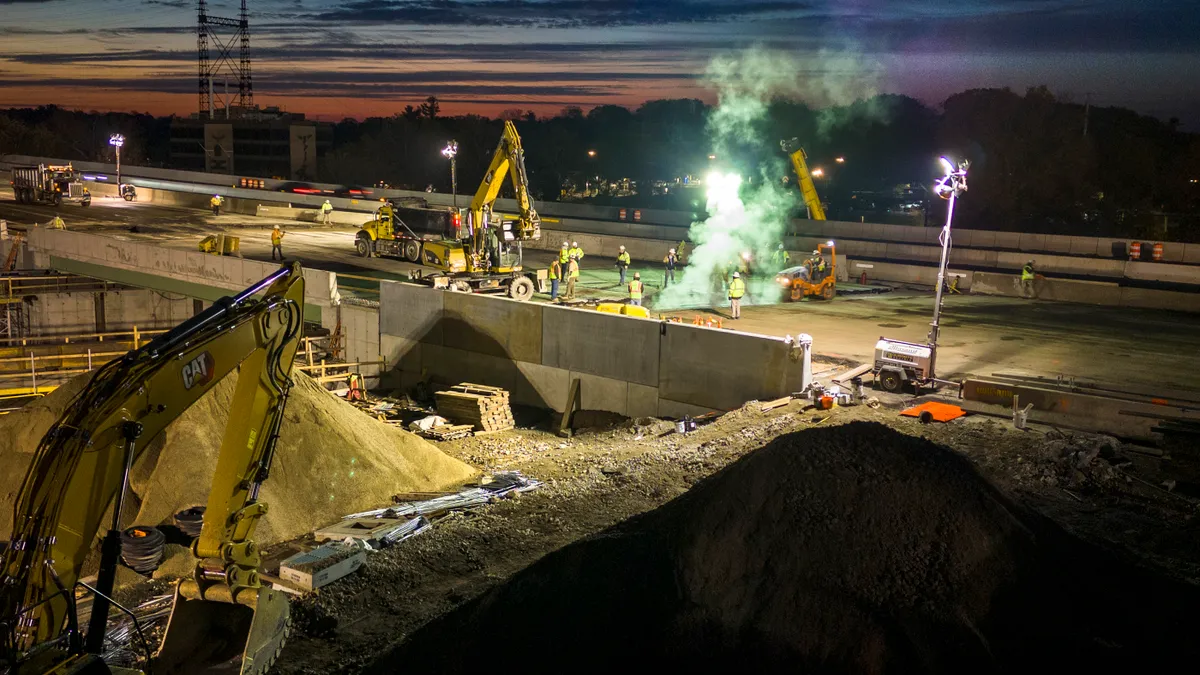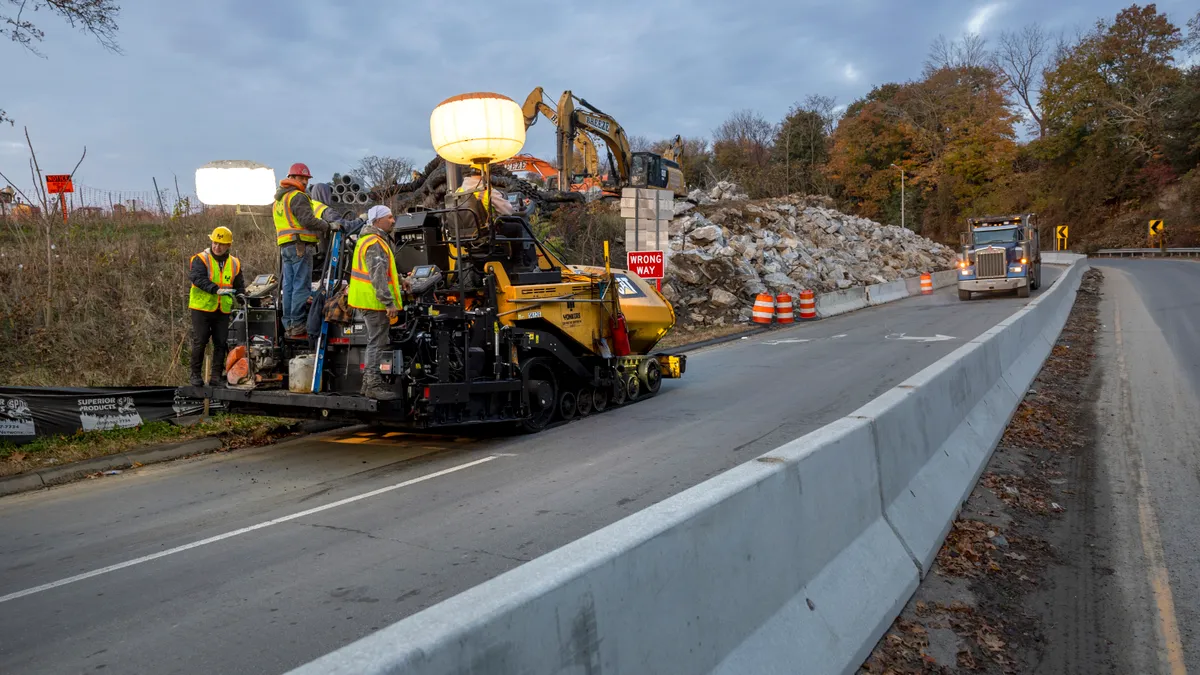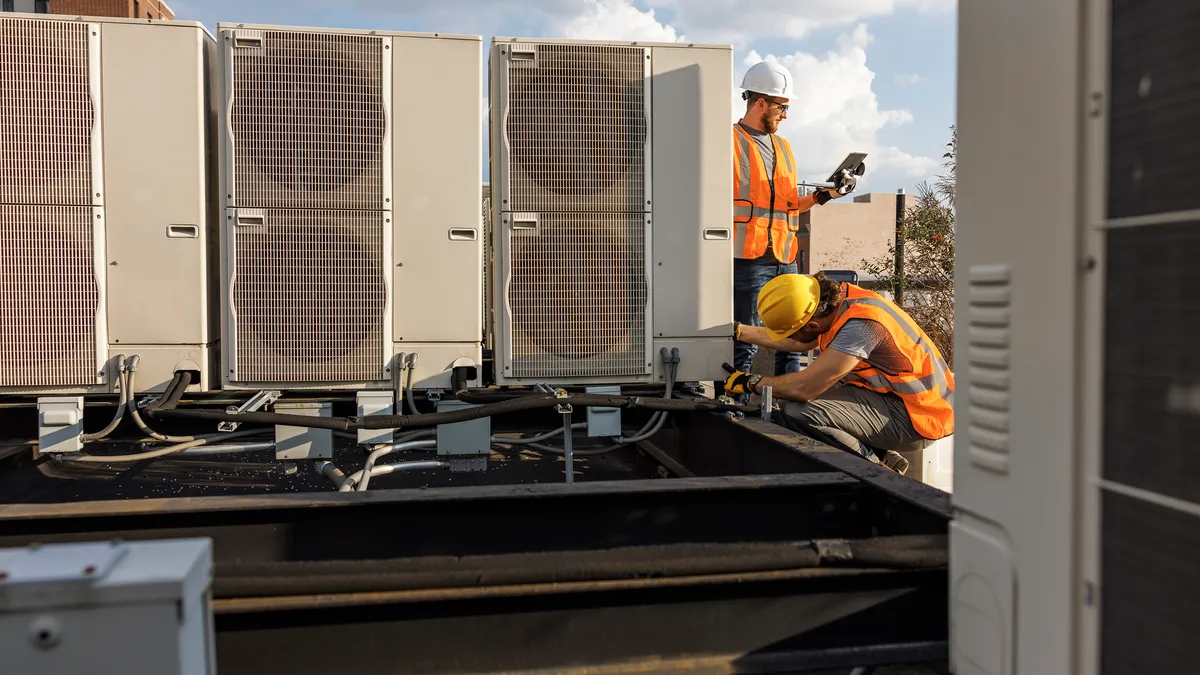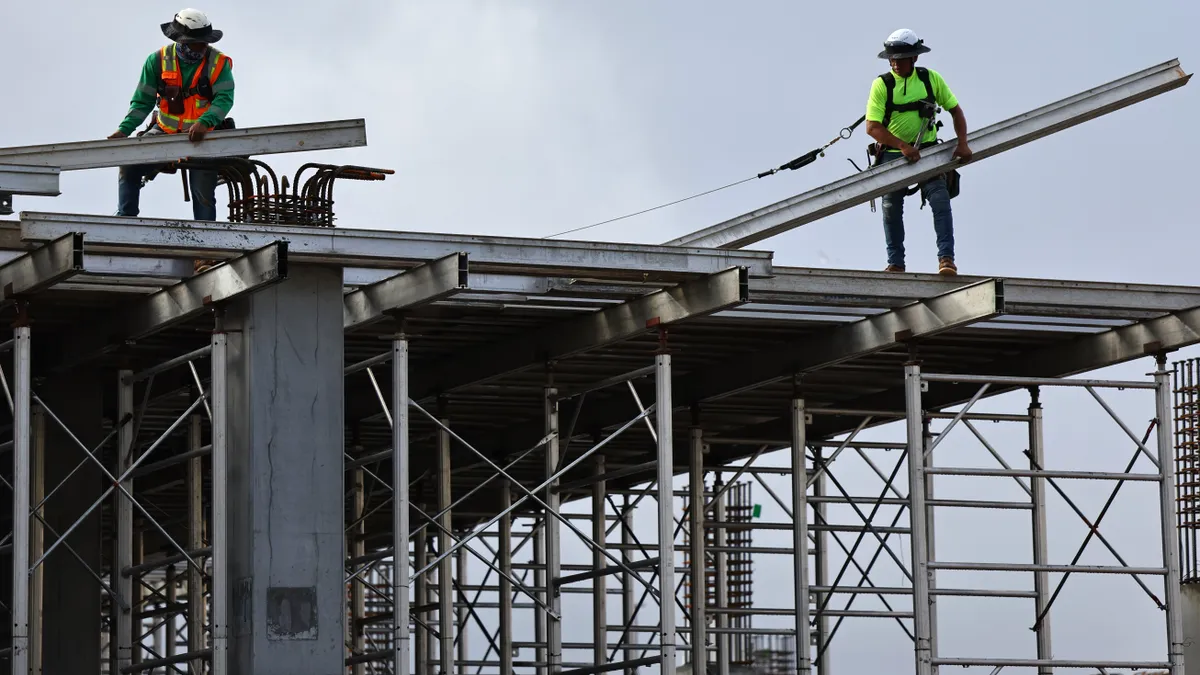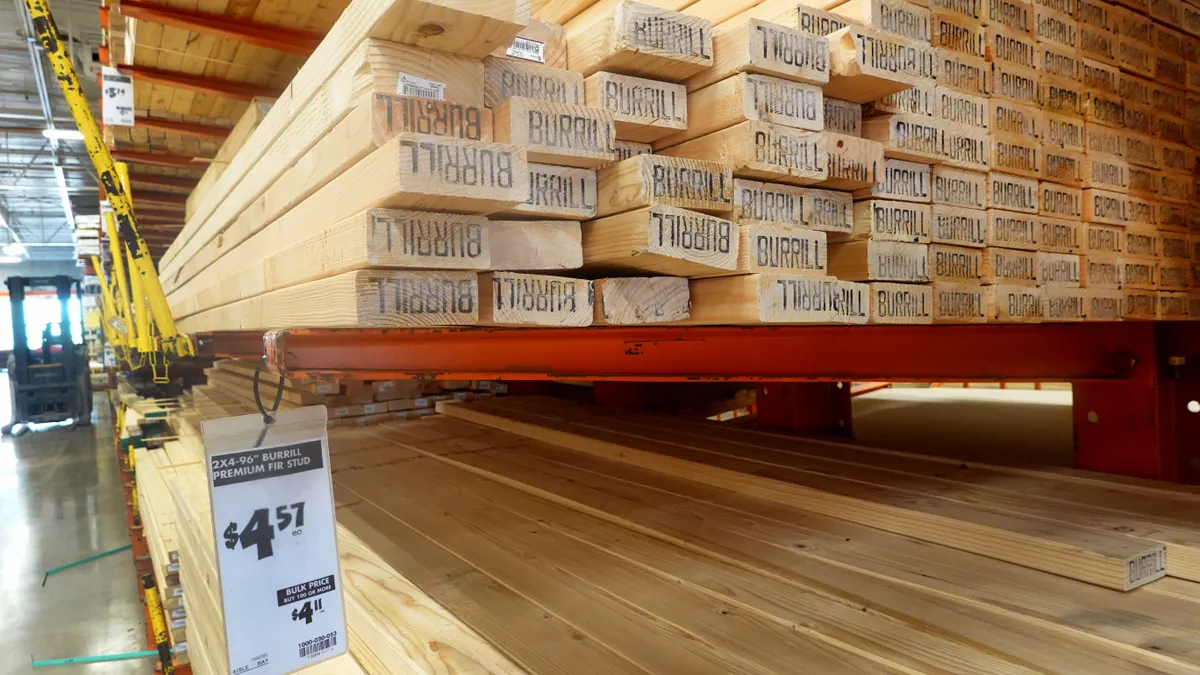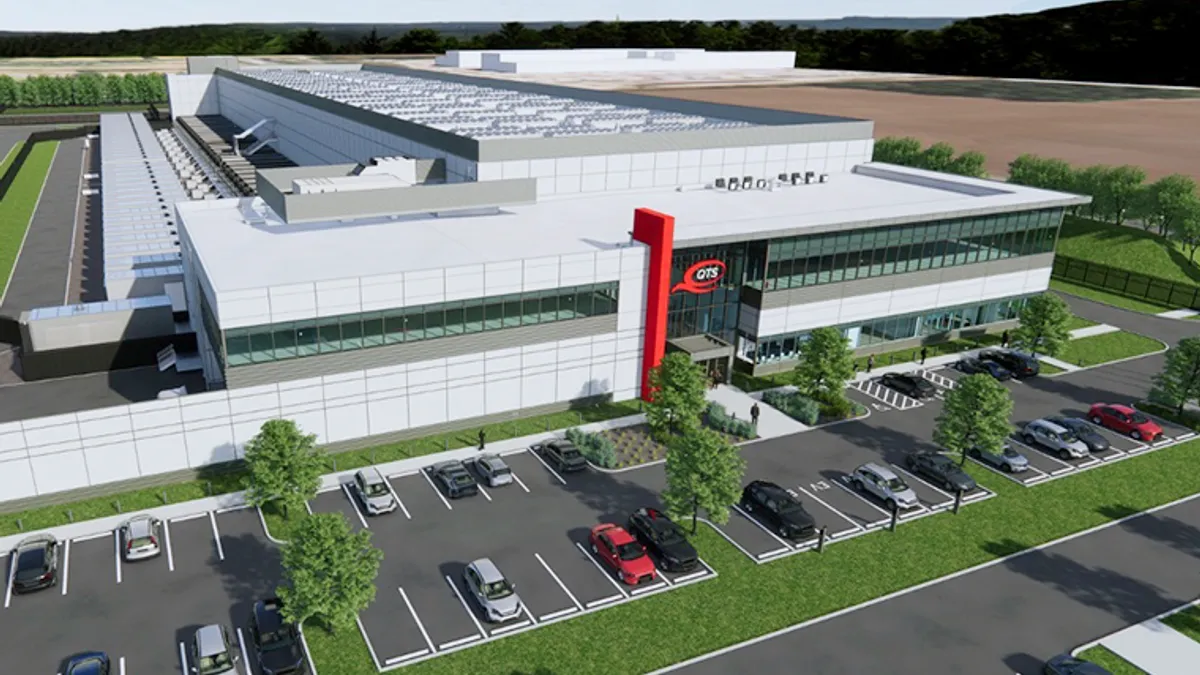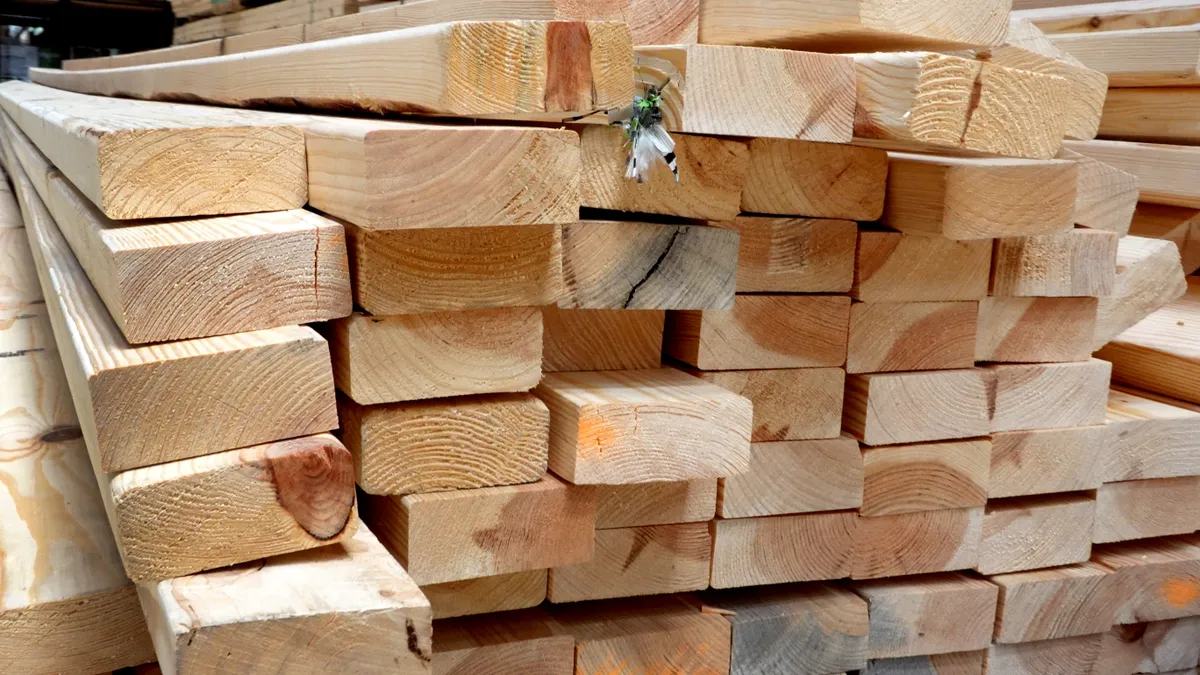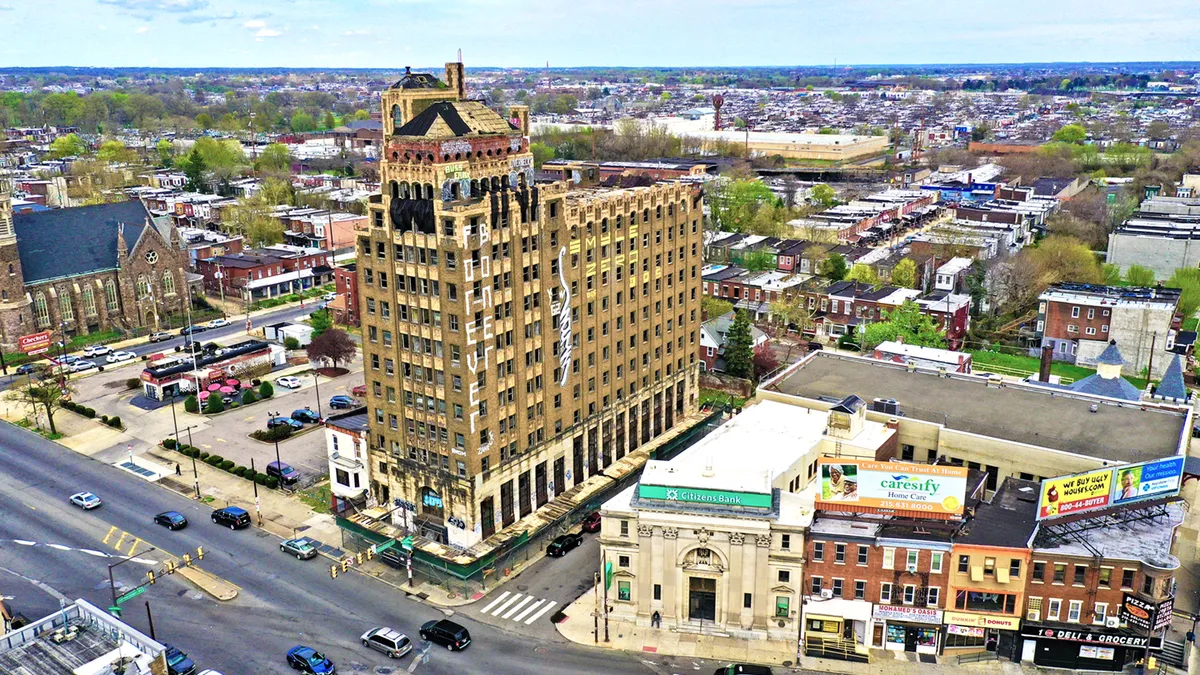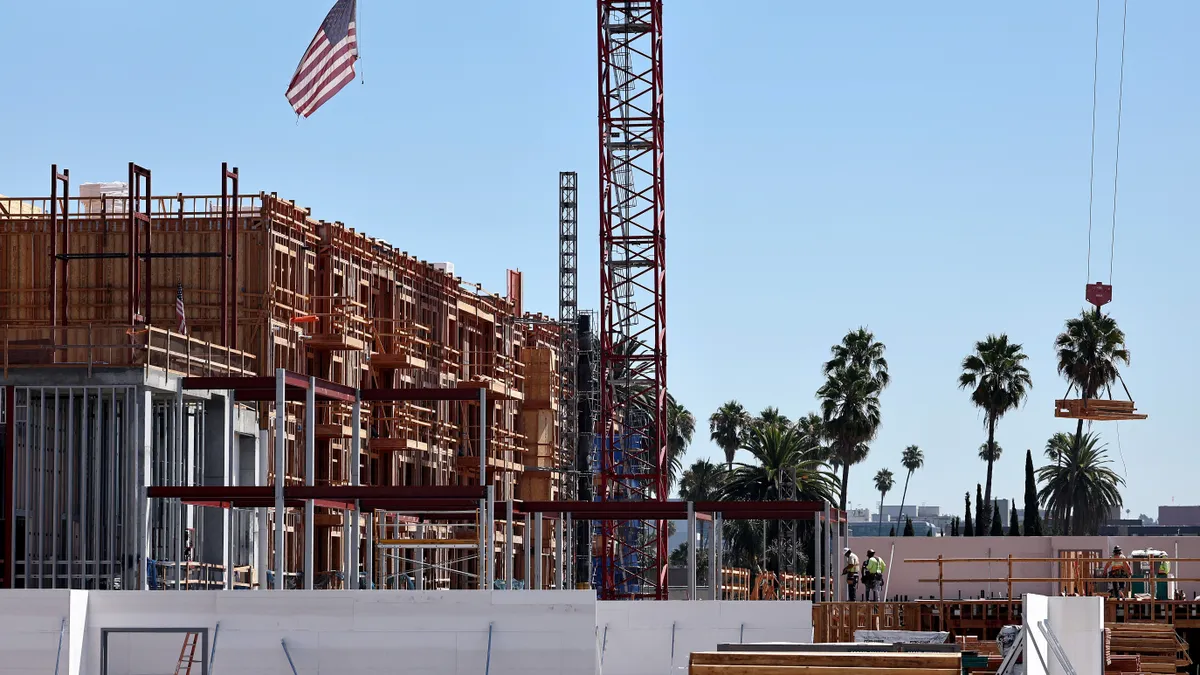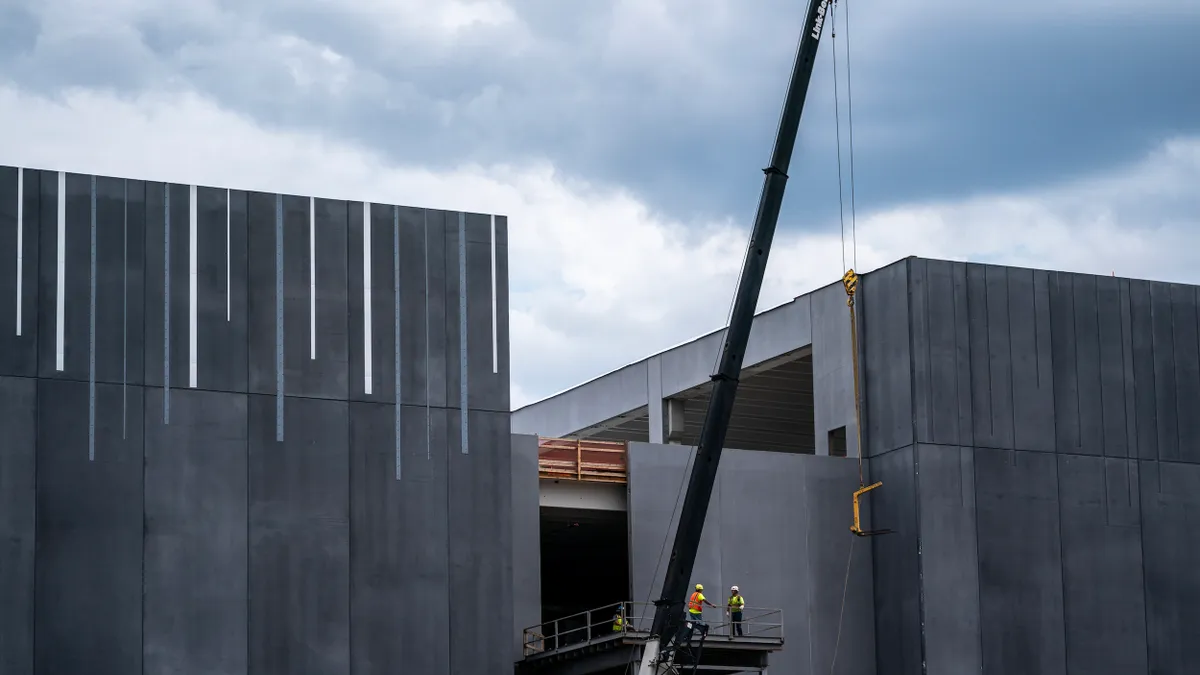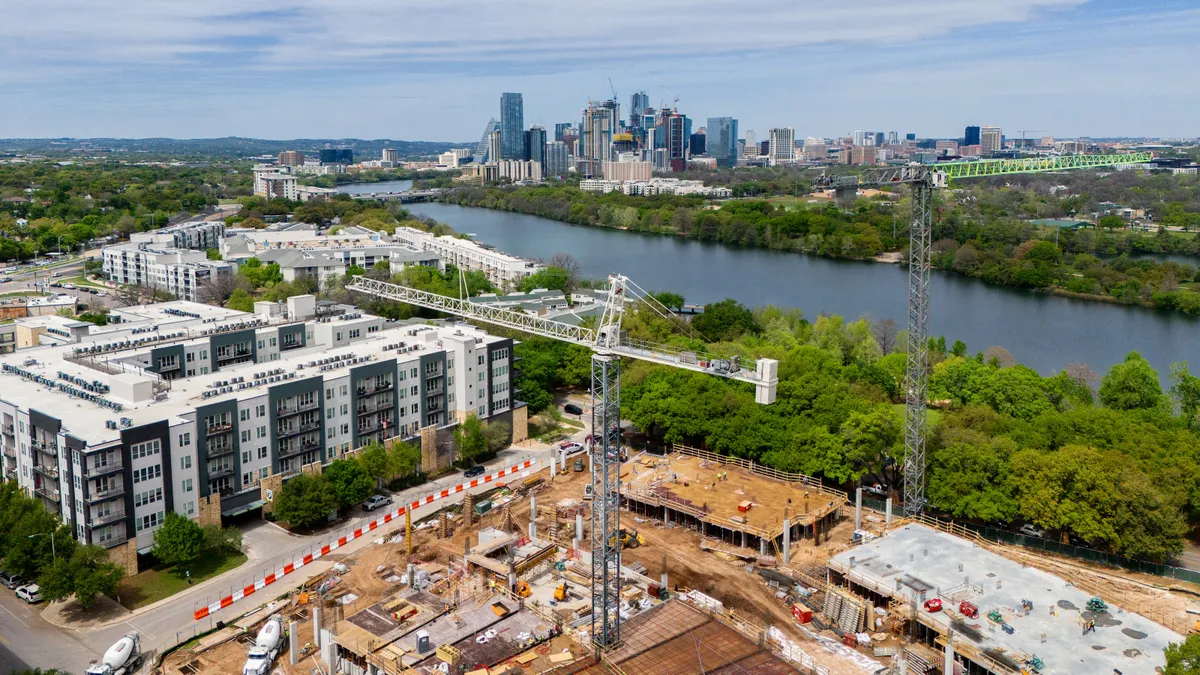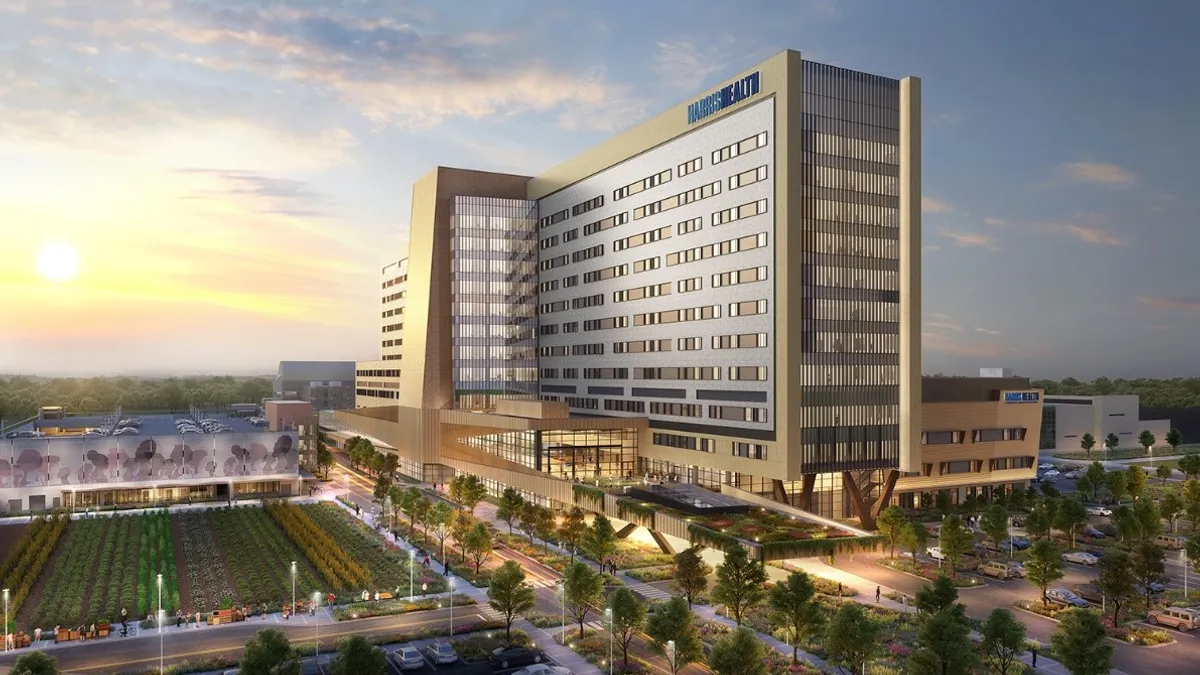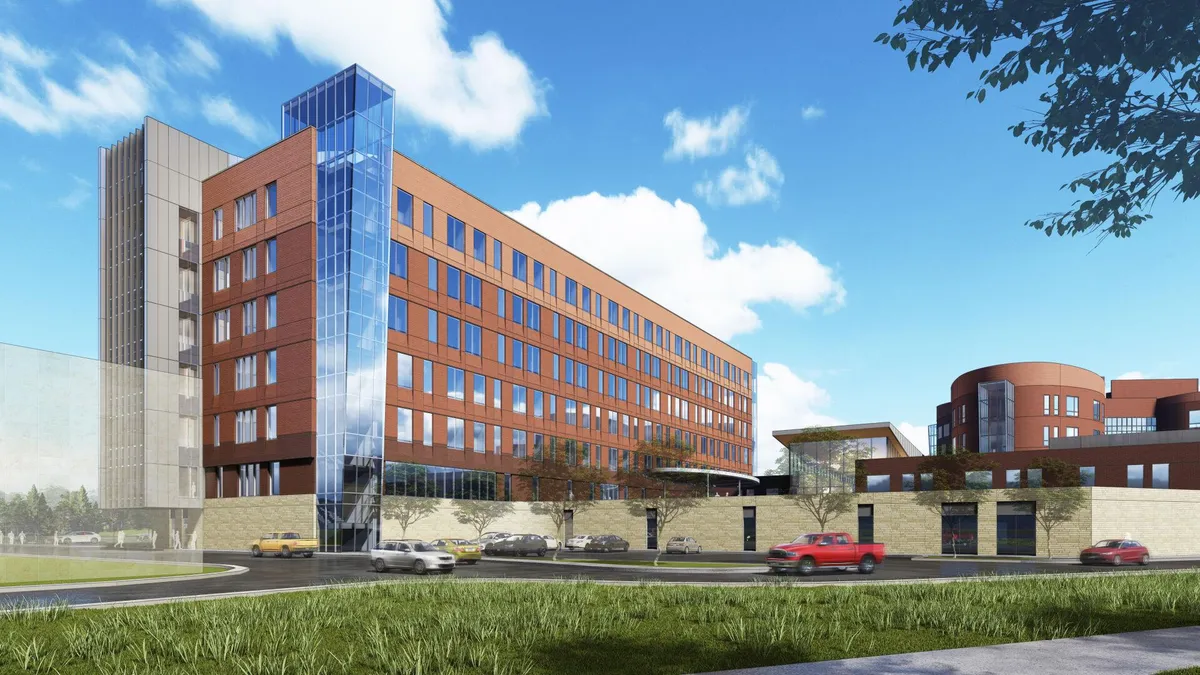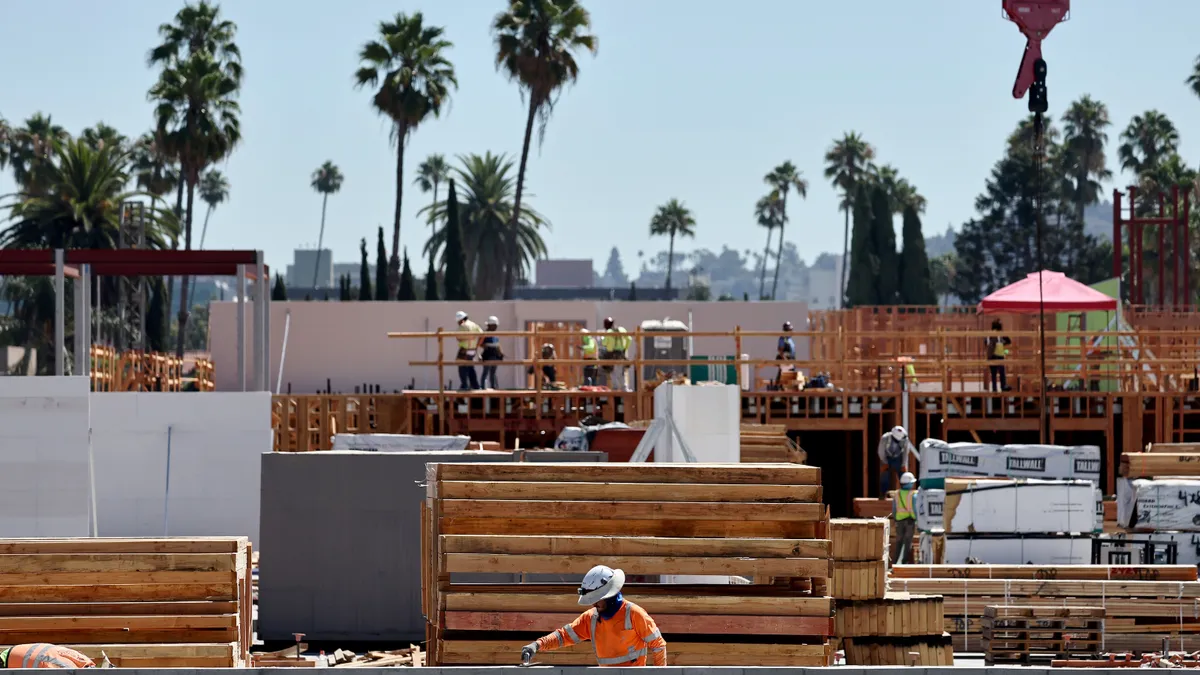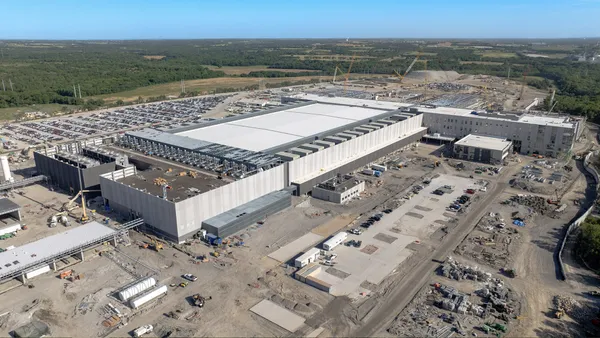Dive Brief:
- High interest rates caused total construction starts to plunge 15% in November to a seasonally adjusted annual rate of $927 billion, a 10-month low, according to Dodge Construction Network.
- The downward spiral pushes overall year-to-date construction starts through November to trail last year’s pace by 4%, according to the report. November’s double-digit decline now marks the third consecutive month of falling construction starts.
- “Construction starts are deeply feeling the impact of higher rates,” said Richard Branch, chief economist for Dodge. “While the Federal Reserve seems poised to start cutting rates in the New Year, the impact on starts will lag. As a result, starts are expected to be weak through the midpoint of 2024 before growth resumes.”
Dive Insight:
Alongside the Dodge starts report, which measures projects that have broken ground, the American Institute of Architects’ Architecture Billings Index also remains negative. This index, an indicator for construction activities by nine to 12 months, tracks architectural design activities for upcoming projects.
The score remained below 50 in November for the fourth consecutive month, indicating contraction, rather than growth, in planning activity.
That also marked the seventh month in 2023 with an overall decline in billings, said Kermit Baker, AIA’s chief economist. Firms in all regions reported a drop, with business conditions remaining softest for firms located in the West, according to the AIA report.
Manufacturing starts slump
Manufacturing projects have propped up nonresidential starts for much of the year. Without record building levels from the subsector, nonresidential activity would largely be negative, according to Dodge.
November’s data underscored that broader weakness. Manufacturing starts plummeted 74% in November compared to the previous month, largely due to very high activity in October. That pushed overall nonresidential building starts to drop 29% in November to a seasonally adjusted annual rate of $345 billion, according to Dodge.
Commercial starts, which include retail, office and warehouse projects, tumbled 19% in November, though office buildings themselves posted a surprising gain. Another rare bright spot included institutional starts, which consists of healthcare and education projects. Those jumped 7% due to a significant uptick in healthcare activity, according to Dodge.
Still, year to date through November, total nonresidential starts remained 7% lower than in 2022. Institutional starts gained 5%, while commercial starts fell 13%, according to the report.
The largest nonresidential projects to break ground in November included:
- The $1.9 billion Children’s Hospital of Philadelphia Inpatient Tower.
- The $1.6 billion LG Energy battery plant in Queen Creek, Arizona.
- The $750 million expansion of the Iowa Army Ammunition Plant in Middletown.
Nonbuilding starts drops again
Following October’s staggering 32% drop, nonbuilding starts tumbled another 2% in November to a seasonally adjusted rate of $223 billion, according to Dodge.
Highway and bridge starts decreased 8%, while environmental public works also posted a 4% drop. Utility and gas plant projects managed to grow 17% in November, according to the report.
Monthly construction starts
On a positive note, nonbuilding starts remain 19% up overall year to date through November. During that span, highway and bridge construction gained 9%, environmental public works rose 11% and utility and gas plants jumped 49%, according to Dodge.
The largest nonbuilding projects to break ground in November included:
- The $834 million I-405 Brickyard to SR 527 improvements in Bothell, Washington.
- The $406 million second phase of the Sherco Solar Farm in Becker, New Mexico.
- The $353 million addition to the Silverhawk Generating Station in Moapa, Nevada.
Multifamily activity suppressed
Residential building starts declined 6% in November to a seasonally adjusted annual rate of $359 billion, marking the fourth consecutive month of losses, according to Dodge.
Year-to-date construction starts
Single-family starts inched up 1%, while multifamily fell 19% in November. Total residential starts remained 14% lower through last month, with both single-family and multifamily starts falling 15% and 12%, respectively, according to the report.
The largest multifamily structures to break ground in November included:
- The $200 million 55 Broad Street residential conversion in New York City.
- The $200 million redevelopment of The Superman Building in Providence, Rhode Island.
- The $185 million Union West mixed-use development in Raleigh, North Carolina.





















